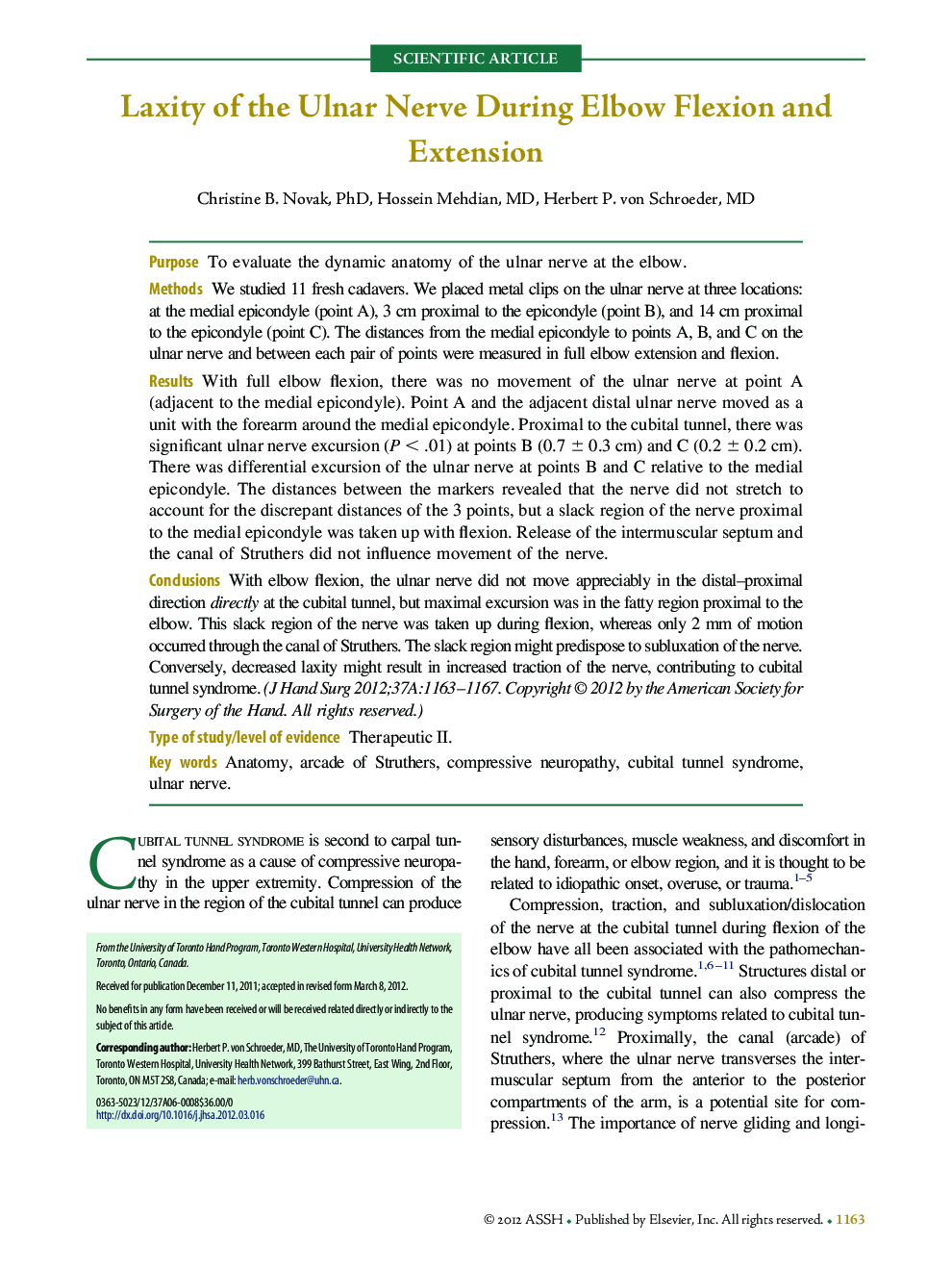| Article ID | Journal | Published Year | Pages | File Type |
|---|---|---|---|---|
| 4068587 | The Journal of Hand Surgery | 2012 | 5 Pages |
PurposeTo evaluate the dynamic anatomy of the ulnar nerve at the elbow.MethodsWe studied 11 fresh cadavers. We placed metal clips on the ulnar nerve at three locations: at the medial epicondyle (point A), 3 cm proximal to the epicondyle (point B), and 14 cm proximal to the epicondyle (point C). The distances from the medial epicondyle to points A, B, and C on the ulnar nerve and between each pair of points were measured in full elbow extension and flexion.ResultsWith full elbow flexion, there was no movement of the ulnar nerve at point A (adjacent to the medial epicondyle). Point A and the adjacent distal ulnar nerve moved as a unit with the forearm around the medial epicondyle. Proximal to the cubital tunnel, there was significant ulnar nerve excursion (P < .01) at points B (0.7 ± 0.3 cm) and C (0.2 ± 0.2 cm). There was differential excursion of the ulnar nerve at points B and C relative to the medial epicondyle. The distances between the markers revealed that the nerve did not stretch to account for the discrepant distances of the 3 points, but a slack region of the nerve proximal to the medial epicondyle was taken up with flexion. Release of the intermuscular septum and the canal of Struthers did not influence movement of the nerve.ConclusionsWith elbow flexion, the ulnar nerve did not move appreciably in the distal–proximal direction directly at the cubital tunnel, but maximal excursion was in the fatty region proximal to the elbow. This slack region of the nerve was taken up during flexion, whereas only 2 mm of motion occurred through the canal of Struthers. The slack region might predispose to subluxation of the nerve. Conversely, decreased laxity might result in increased traction of the nerve, contributing to cubital tunnel syndrome.Type of study/level of evidenceTherapeutic II.
